#lower zambezi
Text
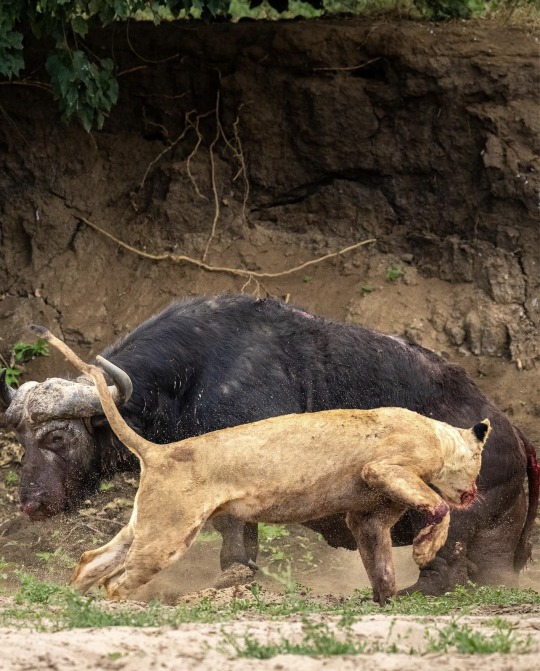
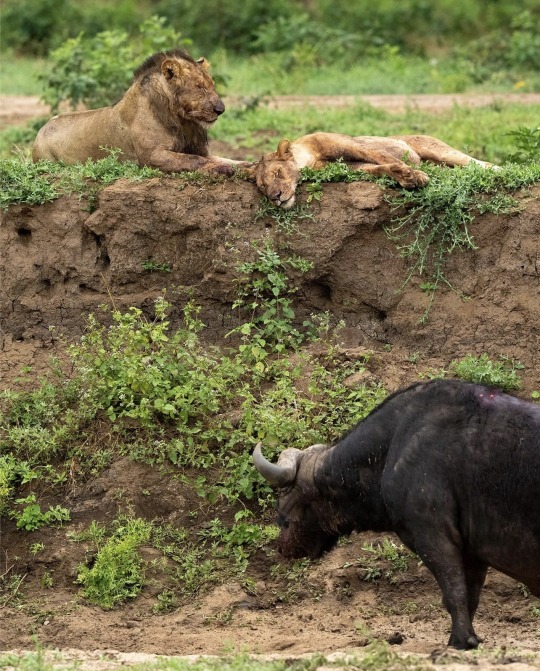
A dance between predator and prey
Photographed by Marlon du Toit
Lower Zambezi National Park, Zambia
65 notes
·
View notes
Photo
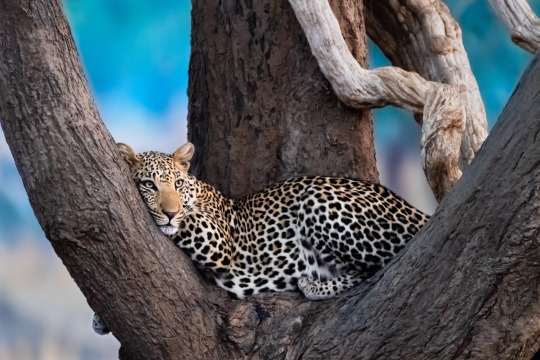
The right spot
Leopard - Lower Zambezi NP, Zambia.
Photographer: Pablo Sarasa Delgado
INTERNATIONAL PHOTOGRAPHY AWARDS™
#pablo sarasa delgado#photographer#international photography awards#leopard#lower zambezi national park#zambia#animal#mammal#wildlife#nature
40 notes
·
View notes
Text


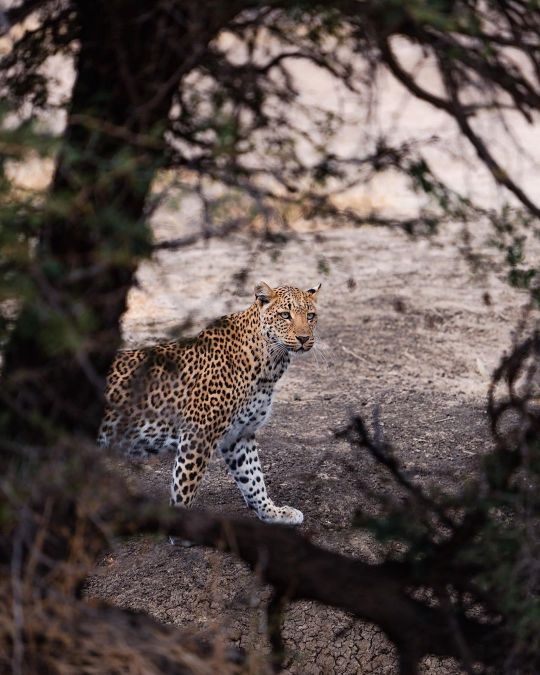
@anabezicamp Lower Zambezi National Park, Zambia
"The Girls 🐆🐆🐆 With Lady, Mai and Scar it’s a family affair."
[Mother Mai and sisters Lady and Scar]
10 notes
·
View notes
Text
WWF Zambia urges gov’t to halt mining in Lower Zambezi
THE World Wide Fund (WWF) Zambia has appealed to government to review and cancel the mining licence for the large-scale mining operations in the Lower Zambezi National Park.
By NATION REPORTER
THE World Wide Fund (WWF) Zambia has appealed to government to review and cancel the mining licence for the large-scale mining operations in the Lower Zambezi National Park.
The WWF has maintained that it is against the mining activities in the Lower Zambezi National Park and is still asking government to consider reviewing its decision to commence large-scale open pit mining…
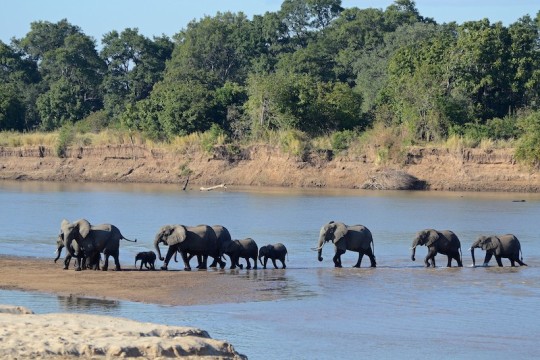
View On WordPress
0 notes
Text
Waterfalls! These gorgeous, powerful features of nature have been oddly lacking in my past lists, I think in part because their danger has always seemed more “obvious” to me. But doing the research for this list has reawakened my phobia of the water. Some of the later entries (numbers 9 and 10 especially) brought back anxieties that I thought I had gotten over long ago, but it was kind of thrilling. Like watching a particularly scary horror movie. Let’s get into it!
1. Underwater Waterfall, Mauritius

No, it’s not really a waterfall. It’s just an optical illusion caused by sand falling off the island’s slope down into the deeper water below. But it looks cool and scary, and the drop-off is 2.5 miles deep so that’s pretty impressive and I think it deserves at least a mention.
2. Blood Falls, Antarctica

There’s nothing particularly dangerous about this one, it just looks incredibly creepy. Obviously, it’s not actually blood, it’s just water that’s very rich in iron. But the really fascinating part of this waterfall is that its source seems to be a subglacial lake that contains a unique microbial ecosystem which has been isolated for two million years! These microbes are like nothing else we’ve ever observed in nature before. They live in an incredibly cold and extremely saline lake, and metabolize sulfur and iron ions with no oxygen present. They are being used as a model to study what life on ice-covered alien planets could be like.
3. Khone Falls, Laos
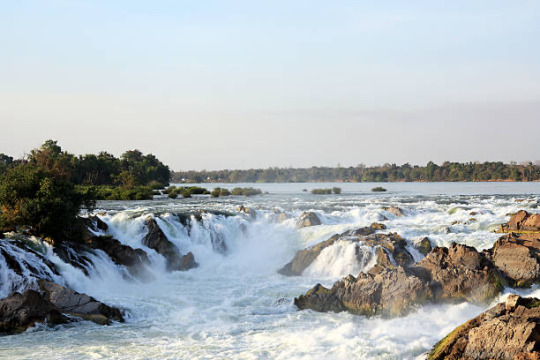
This waterfall is not nearly as famous as some of the others on this list, which is surprising because it’s the widest waterfall in the world, with an average width of six miles! Although not particularly tall, it is the second most powerful waterfall in the world, more than double the power of Niagara Falls! The Khone falls divide the Upper and Lower Mekong river, making travel by boat between the north and south impossible. What makes it kind of unsettling to me is that during the rainy seasons the falls are basically swallowed up by the river, turning them from a spectacular waterfall to a series of massive rapids.
4. Huntington Gorge, Vermont

When water levels are low, this river is a popular and scenic swimming spot, and the canyon has an almost otherworldly quality with its unique bends and overhangs. Unfortunately, these very features are what makes it so dangerous. Much like the infamous Strid, the gorge is full of holes, steep drop-offs, and powerful currents hidden beneath the water, which can suck people in and trap them against the cliff walls. Over fifty people have died here since the 1950s, and many more have been injured. With proper precautions, one can safely explore the gorge and swim in the river, but don’t forget that this water has swallowed up many people before you.
5. Victoria Falls, Zambia
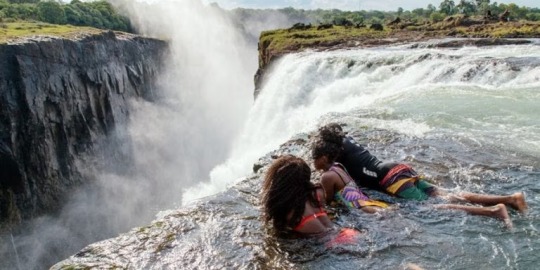
I’m sure most of you already know about Mosi-oa-Tunya, more widely called Victoria Falls, as the largest waterfall in the world. Formed as the Zambezi river pours into a series of massive gorges, this curtain of water spans nearly a mile and falls 300 feet with such force that columns of rising spray can be seen for miles around. Despite this, the pools around the lip of the falls can be relatively tame, and locals have fished while balancing on the edge of the cliff for generations. The safest and most famous of these fishing holes is the Devils Pool, which allows you to literally swim right up to the edge of the world’s biggest waterfall. The pool is actually very safe when the correct precautions are taken, and I can only find one death attributed to the pool specifically, when a tour guide in 2009 fell while trying to help a man who had slipped and was dangling off the edge (and, honestly, I was expecting a lot more deaths given the amount of clickbait articles advertising it as the most deadly swimming hole in the world). Although that was the only death from the Devils Pool, there have been many other deaths at Victoria Falls, mostly tourists who underestimate the power of the river or get too close to the edge. So if you ever visit this spectacular waterfall, please observe it from a safe distance and follow all the rules.
6. Huka Falls, New Zealand
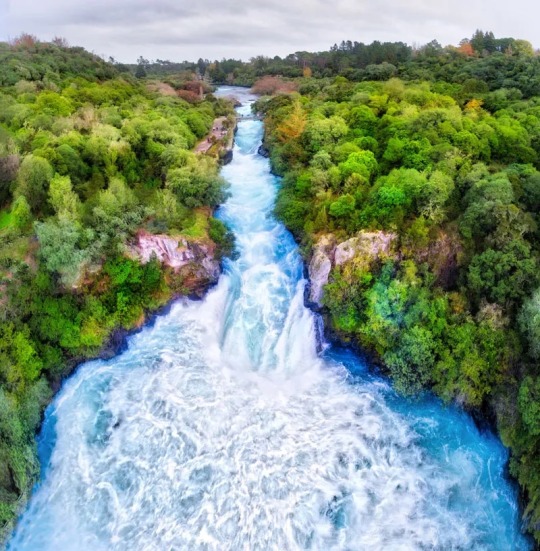
This is not a traditional waterfall, but rather a series of small waterfalls along a narrow stretch of the Waikato river, creating an incredibly turbulent chasm that ends in a whirlpool. The 300-foot wide river is funneled into a 50-foot wide stream, causing a torrent of water that flows at a rate of 58,000 gallons per second. Obviously, this is not an area that you should get in the water, but not everyone takes that advice. There have been multiple deaths at this waterfall, and a few narrow escapes, including two swimmers who, incredibly, survived after trying to raft down the falls on pool toys. Please, for the love of god, don’t do that.
7. Niagara Falls, US/Canada

These falls are the only place on this list that I’ve visited, and I can tell you they are certainly an incredible sight, but also rather intimidating due to their sheer size and power. These three massive waterfalls are fed by the Great Lakes and, combined, have nearly 700,000 gallons of water thundering down every second. There is also a permanent whirlpool in the river that has existed for over 4,000 years and reaches depths of 125 feet! Besides being huge and awe-inspiring, these waterfalls are known for their appeal to daredevils who have gone over the edge in barrels or, in one case, a giant rubber ball. But these famous success stories are punctuated with tragedy. Roughly 20-30 people die at Niagara Falls every year. Most of these, sadly, are suicides, but others are failed attempts to replicate the successful daredevils of the past, and others are accidental. An estimated 5,000 bodies were recovered at the bottom of the falls between 1850 and 2011.
8. Murchison Falls, Uganda
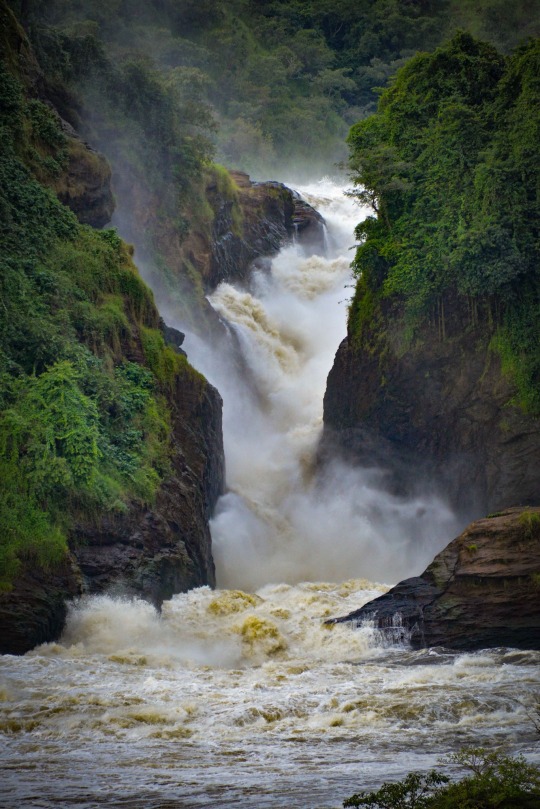
Also known as Kabalega Falls, this is the worlds most powerful waterfall. Formed as the Nile River flows from Lake Kyoga to Lake Albert, this waterfall is so strong it literally causes the ground to shake around it. Here, the Nile is constricted from a river nearly 400 ft wide to a passage only 20 ft wide, creating an incredibly turbulent and violent tunnel of water that tears its way into the pool below at 79,000 gallons per second. And this is no ordinary pool. Waiting below the falls is the highest concentration of large crocodiles observed anywhere in the world, waiting for any dead or stunned animals caught in the falls to wash into their lair. Although the waterfall and surrounding park are now a beautiful tourist attraction and wildlife refuge, the history of the falls includes tales of human and animal sacrifices, thrown in alive to appease the gods that some believed resided beneath the raging waters.
9. Bath Fountain, Jamaica
This is just a random little waterfall along a hiking trail, but the video triggered some intense bathophobia in me for the first time in a while. Like, I was scared to get in the shower after watching this. Proceed with caution:
youtube
10. Kipu Falls, Hawaii
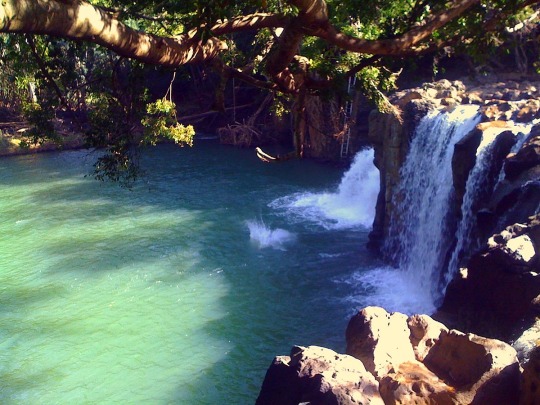
This one scares me because, despite my research, I can’t actually figure out what the hell is happening here. Multiple people have died here; all tourists, all drownings, all of seemingly very unclear causes. Kipu Falls is a beautiful and popular swimming spot, and locals frequently dive off the top of the falls with seemingly no danger. However, five deaths over the course of five years from 2006-2011 challenged its reputation of being a safe swimming hole. All the articles I could find seem to repeat the same information; there is no current in the pool and the waterfalls are not especially powerful. Despite these established facts, all five deaths were the same. Someone jumped in, surfaced, and then were dragged back down to the bottom of the pool and held there until they died. This has resulted in a lot of speculation, including everything from a hidden whirlpool current to evil spirits. I’m just. Really unsettled by the lack of information on this one. Every article I found was published in 2011 and I couldn’t find any updates, which hopefully means people aren’t still dying here, but… what the fuck???? Was going on????? Sorry guys this one might not be as dangerous as some of the others but it freaks me out a lot so it’s getting a higher rating. I want to know what’s going on but I’m sure not going to investigate it myself.
630 notes
·
View notes
Text
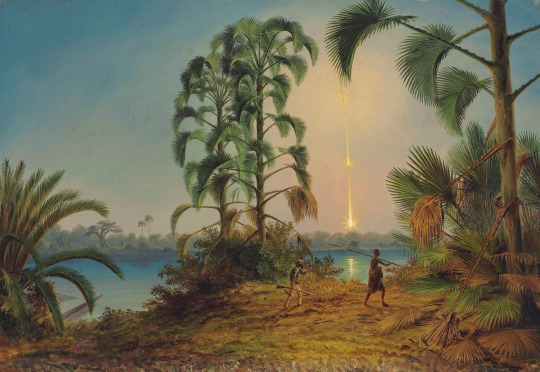
Thomas Baines (1820-1875)
Searching for Hippopotami on an island in the Zambezi about two miles above the Falls, young palms before the first leaves are shed – and brilliant Meteor (Brilliant Meteor on the Zambezi River, 1864)
indistinctly signed and dated ‘T BAINES / APRIL 8 1864’ (lower right) and further signed, inscribed with title and dated ‘Searching for Hippopotami on an island / in the Zambezi about two miles above the Falls / young palms before the first leaves / are shed – and brilliant Meteor / sketched August 1862 / T Baines / Walvisch Bay / april 8 1864’ on the reverse
oil on canvas
Christie’s
36 notes
·
View notes
Text

Solly Levi Photography
Mana pools
Mana Pools National Park is a 219,600-hectare wildlife conservation area and national park in northern Zimbabwe. It is a region of the lower Zambezi in Zimbabwe where the floodplain turns into a broad expanse of lakes after each rainy season. As the lakes gradually dry up and recede, the region attracts many large animals in search of water, making it one of Africa's most renowned game-viewing regions. The park was inscribed, in conjunction with the Sapi Safari Area and Chewore Safari Area, as a single UNESCO World Heritage Site in 1984. The Mana Pools were designated a Ramsar wetland of international importance on 3 January 2013. Mana Pools National Park is a World Heritage Site based on its pure wilderness and beauty. It is home to a wide range of mammals, over 350 bird species, and aquatic wildlife and is one of the world's wildest and best preserved natural ecological areas. Wikipedia
30 notes
·
View notes
Text
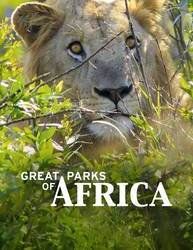
Great Parks of Africa - nature film review
Whether you are considering tourism or seeking understanding about the last great wild places of the world, The Great Parks of Africa is a good place to begin your search. Each episode on the Smithsonian Channel focuses on a single wildlife reserve, each one unique and limitless in beauty. The 11 episode series also cover Kgalagadi Transfrontier and Lower Zambezi Park.
Table Mountain National Park needs no introduction, holding the great Table that overlooks Cape Town, one of the most beautiful cities on Earth. There is much more to this sprawling park that stretches from the famous plateau, across Kirstenbosch Botanical Garden, down a series of mountains dubbed The Twelve Apostles, along Chapman’s Peak Drive, the finest scenic drive in the world, ending in the Cape Peninsula to the Point of Good Hope. ‘Breathtaking’ scarcely does it justice, as it is merely a word. Swept by the frigid Benguela current, upwelling brings nutrients to the surface and creates some of the most productive and diverse oceans in the world.
The soil quality of the land, however is poor, the winds constant, and fires frequent. The animals who live here must struggle to survive such harsh conditions, but that adversity has created the Cape Floral Kingdom, more biologically diverse than a rainforest. Wherever you stand in the heath, you are surrounded by a dozens of species of proteas, ericas, and restios. Walk a hundred meters, and you will find an entirely different community. That diversity is echoed all the way across the Fynbos, and few parks equal Table Mountain for such diversity. Take a trip down to the Cape Point, and experience the collision of two oceans, and you will know the power of nature.
Across the country lies the more tranquil Isimangaliso National Park, a vast area along the KwaZulu-Natal coast dominated by the St Lucia Estuary. The river that flows into this wetland varies in strength, sometimes stopping entirely, allowing the ocean to flow into the estuary, creating a salty lagoon. Few places on earth can rival the sheer diversity of bird life, some of which journey here from Europe to take advantage of the bounty. Leatherback sea turtles also call this place home, and the world’s largest vegetated sand dunes are used by thousands of bird species, crocodiles, and others. The sand is unique, with high levels of titanium, which holds the sun’s heat and that energy fuels the activity of the animals that reside here.
Hippos are present here in the hundreds, filling the estuary river down toward the ocean. At night they journey on land to graze, sometimes going into the town of St Lucia for window shopping. One resident named Vincent for his ear injury has killed people who ran into him at night. None of the residents take this personally, as Vincent’s ilk made their home in the estuary long before humans.
The richness of this land is apparent as offshore whales can be seen in season, Humpbacks making the journey to feeding grounds and breaching constantly on the way. Brimming with elephants, antelope, and rhino, various carnivores following them, and the occasional leopard, Isimangaliso is a truly wild land.
Karoo National Park is a far more quiet place, lying far inland across two mountain ranges and receives very little rainfall. Home to true desert specialists, one can find herds of springbok, gemsbok, and the rare Cape Mountain Zebra. The spectacular mountains and rock formations make for astounding hiking, and one is bound to run into ostrich, black-backed jackal, and itinerate eland. There are more tortoise species here than any other reserve. The critically endangered riverine hare can be found here. The real riches of the park can be found by getting down on a knee - the park is a haven for succulent plants such as living stones. The bitter cold of night brings on a crystalline star-filled sky, which is perfect for star viewing. Just to the west is the small town of Sutherland, home of the largest optical telescope in the southern hemisphere.
The Garden Route chapter covers an embarrassment of riches, as one glides along the southern coast of Africa, battered by the ocean waves. The magnificent De Hoop Nature Reserve begins the trip, which is a treasure of a place that shelters some of the most endangered mammals in the world, including the Bontebok and Cape Mountain Zebra. The Southern Right Whale can be seen along the coast, though is easiest to find in the bay of De Hoop. Further east are the small villages of Witsand, filled with glittering beaches, Stillbaai, Mossel Bay, and George. There are stretches of wilderness between the villages, sheltered forest where the rare Yellowwood tree can still be found. The Cape Floral Kingdom covers most of the remaining undeveloped land. Plettenberg Bay adjacent to an elephant reserve and the Tsitsikamma National Park is an endless paradise. In between is the vacation town of Knysna, at foot of an estuary. Ocean life collides with the riverine forest, filled with pristine beauty.
Augrabies National Park sits in a remote corner of northwestern South Africa along a length of the Orange River. Covering 28000 hectares, the arid park is home to the Quiver Tree and many desert tolerant species like springbok and gemsbok. Along the vegetated Orange River the Cape Clawless Otter and Caracal can be sighted. The true draw of the park is one of the planet’s great waterfalls, the Augrabies, cascading 60 meters in height into a granite basin that runs 240 meters deep.
Kruger’s Pafuri Camp lies in the remote northern section of the Kruger National Park, and has a storied history as an outlaw region. More recently during Apartheid the Makuleke people were forced off the land into a barren region, only later negotiating a return after the first democratic elections. The Makuleke decided not to return, but to keep the land for conservation and staff the park. Today the Pafuri holds 75% of the Kruger’s biodiversity, including the Big Five seen throughout the park, but is best known for having the finest birding in the country. Over 350 species can be seen here on many safari walking trails.
Chobe: Land of Learning covers the National Park of Botswana bordered by the Chobe River, one of the best places to see elephants. The dirt roads and occasional rustic buildings are the only sign humanity even exists, as Chobe is a true wilderness. Elephants herd here in vast numbers, at least 50000 at present. Lions, African Painted Dogs, spotted hyena, cheetah, rhino… a seemingly limitless array of mammals make this park their home. With the languid river, waterbirds such as spoonbills, ibis, storks, ducks, and other waterfowl are common.
Part of this park is the Savuti marsh, the relic of a vast inland lake that has since dried up after the geologic plate on which Botswana sits migrated. The carnivores that patrol this area have been the stuff of legends.
Addo Elephant National Park is the third largest game reserve in South Africa, lying next to Algoa Bay. It is best known for its great elephant herds, but also holds lions, buffalo, leopards, rhinos, and at the coast Southern Right Whales and Great White Sharks. It is also a stronghold for black rhinos, though they tend to avoid people and stay in dense thickets. Spotted hyena are common, African Painted Dogs less so. The star of the park is, of course, the African Elephant, in all its tree engineering glory. Seen with these elephants are enormous amounts of elephant dung, which is in turn processed by a very healthy population of dung beetles. Drive slow - dung beetles have the right of way. Algoa Bay also has one of the few remaining colonies of the critically endangered African Penguin.
Hluhluwe-Umfolozi, located in KwaZulu-Natal, is a nature reserve of great historical importance. Established in 1895, it is the oldest wildlife reserve in South Africa and pioneered animal capture and sustainable utilization in wildlife conservation. At a time when the rhinoceros was being hunted to extinction, the park was a haven. Even today the white rhino has been exterminated from nearly all of its native territory. Today the park has been a true success story for many species struggling elsewhere. Elephants proliferate across the park, to the point where there are too many for the area given their penchant for uprooting trees. This would not be a problem if the elephants could migrate elsewhere, but the park is hemmed in on all sides by humans. Black rhino numbers have done as well as their white relatives, though they are still quite vulnerable. African Painted Dogs normally struggle to establish a foothold within a reserve in competition with lions and against the hostility of people. At Hluhluwe-Umfolozi, the packs have done a brisk business, hunting with wild success and breeding prodigiously enough to create emigration pressure which is released by the Wild Dog Metapopulation project. The genetic variability has been critical to maintaining Painted Dog viability elsewhere in the southern African region.
If you are looking for tourism options, you would do well to visit Hluhluwe-Umfolozi park, combined with the Isimangaliso Park located across the N2 to the east.
3 notes
·
View notes
Text
African Gods: 10 Mythological Figures You've Probably Never Heard Of
There are many gods across the African continent that it is almost impossible to enumerate them all. This is hardly surprising given that the African continent is home to more than 1.2 billion people spread across more than 3,000 tribes and 30.37 million km² of land.
In this article, you will learn about ten powerful African Gods from across the continent. The names of these mythological figures inspire veneration, devoutness, and even fear.
1. Oya
The first African God on our list is the goddess Oya. Oya is the goddess of weather, especially tornadoes, lightning, destructive rainstorms, and fire. She is also the goddess of female leadership, persuasive charm, and transformation.
She is a fierce warrior and strong protector of women. When women find themselves in difficult situations, they call on Oya to come to their aid.
The ferocious and protective deity is worshipped by the Yoruba in Nigeria and is regarded as one of the most powerful gods in the Macumba religion. The Macumba religion is also practised in Brazil and parts of South America.
2. Nyami Nyami
Our second African God, Nyami Nyami, is from Southern Africa. Also known as the Zambezi River god or Zambezi Snake spirit, Nyami Nyami is one of the most important Gods to the Tonga people of Zambia and Zimbabwe.
This African God is often depicted as being a dragon-like creature with a snake’s body and the head of a fish.
According to mythology, Nyami Nyami resides in the Zambezi River and controls life in and on the water together with his wife Kitapo. He protects the Tonga people and gives them sustenance during difficult times.
3. Kibuka
Kibuka is the war god of the Buganda tribe from East Africa. He and his brother Mukasa are the two principal gods of the Baganda. According to some sources, Kibuka provides counsel to the Baganda kings during periods of war and strife.
Locals believe that both Kibuka and his older brother, Mukasa, used to be mortals who later attained godhood.
4. Mawu-Lisa
Mawu-Lisa is the primary deity for the Fon people in Bennin and parts of West Africa. This complex deity is a dualistic figure combining the female Mawu and the male Lisa.
Among the Fon, Mawu is associated with the moon, night, fertility, motherhood, gentleness, forgiveness, rest, and joy. Lisa is associated with the complementary qualities of the sun, day, heat, work, power, war, strength, and toughness.
5. Mami Wata
Next on the list of powerful African Gods is Mami Wata. Mami Wata is a water spirit that is sometimes depicted as having the upper body of a woman and the lower body of a fish. However, according to mythology, the deity can transform her body into any form of her choice.
Mami Wata is venerated in Western, Central, and Southern Africa as well as in the African diaspora in North and South America.

6. Inkosazana
Inkosazana is the young and beautiful goddess of rain and agriculture for the Zulu people of South Africa. She is a member of the Zulu pantheon of gods and is often referred to as the “heavenly princess.”
In the Zulu people’s traditional religion, Inkosazana is associated with agriculture and growth. She is also the patron goddess of girls and young unmarried women.
According to legend if any man looks at her directly, they will fall sick and die.
7. Anansi
Anansi is a West African god who is often portrayed as a trickster. His name translates to Spider and he is often depicted as such. Ananzi is considered to be the god of all knowledge of stories. He is also one of the most important characters of West African, African American, and Caribbean folklore.
The deity is renowned for his ability to outsmart and triumph over more powerful opponents through his ingenuity. He is credited with teaching humans how to take care of themselves through agriculture and hunting.
8. Tano
Tano is the God of War and Strife and is one of the most important gods in the Ashanti mythology of Ghana. He is also a river god and is represented by the Tano River which is located in Ghana. He is known as a nature god and a war god.
Unlike most war deities in mythology, Tano does not get along with death and is his rival.
9. Oshun
Among the Yoruba people of southwestern Nigeria and Benin, Oshun is the goddess (orisha) of water, purity, fertility, love, and sensuality. Oshun’s energy can heal and create life, but she can also take it away if she feels that we are ungrateful for what she has given. She represents everything lush, fertile, and juicy in our world.
Followers of the goddess call on Oshun for help with fertility and to cure ailments when modern medicine doesn’t work.
10. Horus
No list of African Gods would be complete without an Egyptian god. Horus is the god of the sky and kingship. He is one of the earliest and most significant Egyptian mythological figures.
He is often depicted as a falcon-headed man wearing a double crown. Horus serves as the provider and protector of the Egyptian people, especially the royalty of Egypt. He is the avenger of the wrongs and the defender of order.
To learn more about African mythology click here.
#African God#African Gods: 10 Mythological Figures You've Probably Never Heard Of#mythology#God#Goddess
4 notes
·
View notes
Link
0 notes
Text
Masai Mara National Park of Kenya- Smiles Travel & Tours
There are other boat safaris within these areas, notably Lower Zambezi National Park, which can give a very different perspective, much like what you may have had within Masai Mara National Park of Kenya—this one allowing you to view game along the riverbanks and experience calm waters.
0 notes
Text
Heroic goose rescues baby from eagle attack
A mother goose’s heroic act saved her gosling from a fish eagle’s clutches in Lower Zambezi National Park.
Wildlife professional Kyle Branch of Classic Zambia Safaris captured the dramatic encounter on film. During a boat safari, Kyle observed the fish eagle hovering over the water, preparing to strike. Instead of targeting fish, the eagle aimed for a baby Egyptian goose.
Sensing danger, the gosling dived underwater to evade capture, but the eagle swiftly scooped it up with its talons. It seemed all hope was lost until the mother goose sprang into action. Knowing that fish eagles struggle to fly with waterlogged feathers, she chased the eagle to the nearby bank where it landed to dry off.
On the bank, the mother goose confronted the eagle, spreading her wings to appear larger and bravely lunging at the predator. The exhausted eagle released the gosling, which quickly darted back to the water. The mother goose then distracted the eagle to ensure her baby’s safe escape before making her getaway.
Watch the encounter in the video below courtesy of Latestsightings
ALSO WATCH: Buffalo charges vehicle amid lion and hyena attack
yoast-primary – 1012424tcat – Animal storiestcat_slug – animal-storiestcat2 – Videostcat2_slug – videostcat_final – wildlife
Source link
via
The Novum Times
0 notes
Text
Road from Chirundu to Lower Zambezi National Park along Zambezi
Forum: Zambia
Posted By: darraaz
Post Time: 2024/07/03 at 01:29 PM http://dlvr.it/T95qSl
0 notes
Text
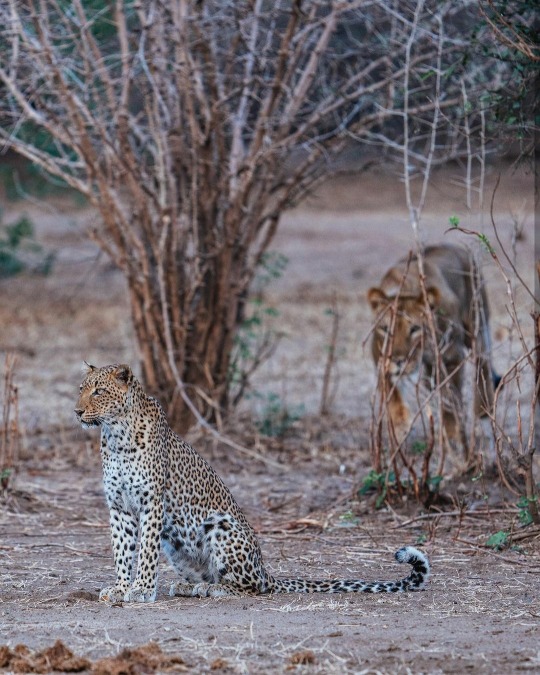
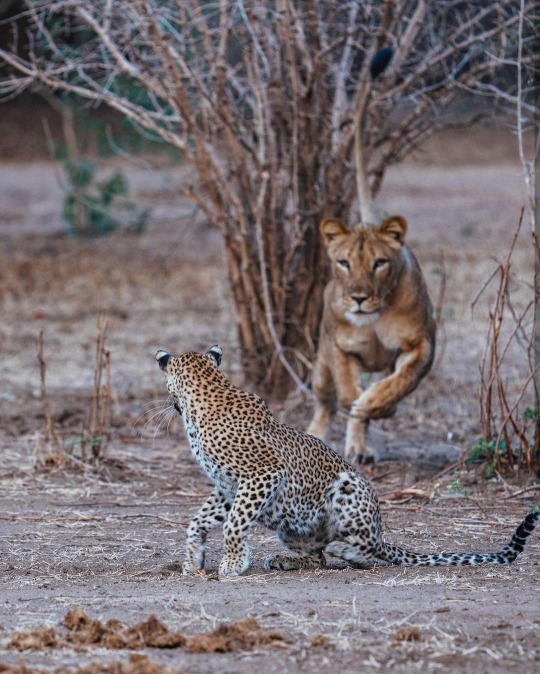
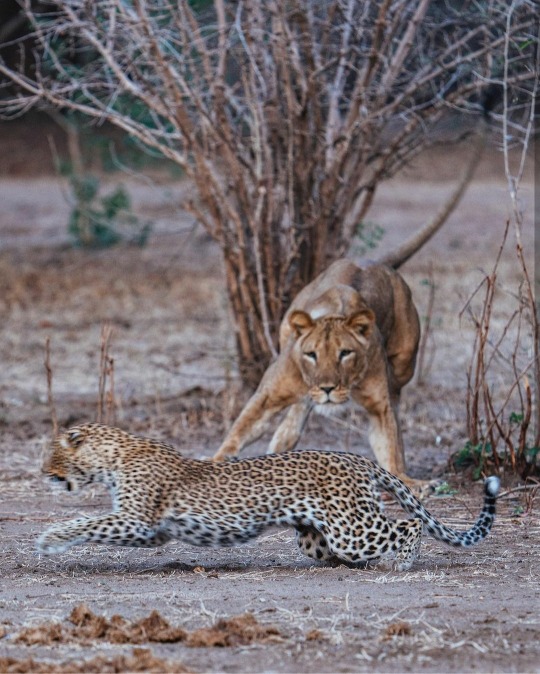
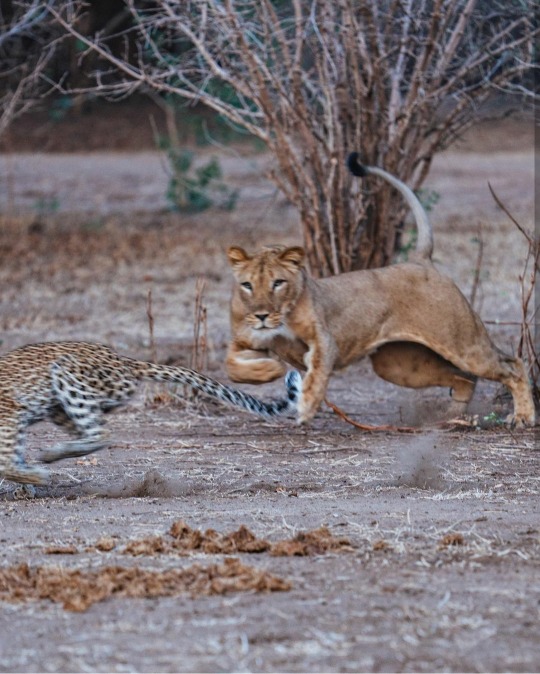

Lower Zambezi National Park, Zambia
Whew! That was close. (She escaped without a scratch.)
154 notes
·
View notes
Text
White Water Rafting Adventure Trips

Introduction To Whitewater Rafting
Whitewater rafting offers a blend of natural beauty and adrenaline. Whether you are seeking an extreme expedition or a mild float, there is a river rafting trip to suit you. Here you will find information about popular destinations, safety considerations, and available trips with Advantage Grand Canyon.
What Is Whitewater Rafting?
White water rafting trips entail navigating a river downstream in an inflatable raft. You travel through rapids and obstacles alone or with a team of paddlers, maintaining control of the raft. River rafting trips range from adrenaline-producing and challenging rapids through waves, steep drops, and around rocks to scenic, calm floats.
River rafting trips are a popular outdoor recreational activity enjoyed by people of all experience levels and ages, from experienced adventurers to beginners.
Types of Whitewater Rafting Trips
Many different types of whitewater rafting trips are available. Each offers a unique experience. They include:
White water rafting adventure trips
White water rafting day trips
White water rafting multi-day trips
Adventure Sport
The most adventurous and experienced river rafters take adventure trips. They feature Class IV and Class V rapids, requiring a high level of physical fitness and expert navigation. You will find them to be mentally and physically challenging rapids. Working closely with fellow rafters is a must.
Cherry Creek in California, the Zambezi River in Zambia, and the Futaleufu River in Chile are popular adventure trip destinations.
Day Trips
A day trip is an excellent opportunity for families and beginners. The trips typically cover a few miles and last three to five hours. Most trips have mild rapids and time to enjoy the scenery and relax. Challenging options are available.
The Upper Colorado River in Colorado, the Snake River in Wyoming, the South Fork American River in California, and the Lower New River in West Virginia are popular day trip destinations.
Multi-Day Trips
Those seeking an immersive experience in the Grand Canyon with Advantage Grand Canyon choose multi-day trips lasting two to 21 days. Depending on the river, river rafters encounter rapids ranging from extreme to mild.
Alaskan Rivers, the Rogue River in Oregon, the Salmon River Middle Fork in Idaho, and the Grand Canyon in Arizona are popular multi-day rafting trip destinations.
Whitewater Rafting Safety
Whitewater rafting is an enjoyable and thrilling adventure, but it is essential to adhere to safety considerations. They include:
Choosing a reputable rafting company with an excellent safety record and experienced guides
Wearing a life jacket and helmet while on the water
Listening during the orientation to learn how to minimize risk
Staying protected from the sun and hydrated - wearing sunglasses, a hat, and sunscreen and drinking plenty of water
Listening and following the guide's instructions
If you fall from the raft into the water, attempt to lie on your back and have your feet facing downstream to avoid underwater hazards and ward off rocks
If a Fall Occurs
It is rare for someone to fall out of a raft. If it does occur, staying calm and following the guide's instructions is essential. You will likely be asked to float on your back and point your feet downstream.
The guide may ask you to try swimming toward the raft if it is within reach. If you cannot swim to the raft, the guide will use hand signals to point to the best exit from the water. It may be the shore, another raft, or an eddy.
Keep the lifejacket snug and dress for swimming, such as a wetsuit in cold water on a chilly day.
Is Whitewater Rafting Risky?
Whitewater rafting can be risky, particularly when challenging Class IV and Class V rapids. Helmets are, of course, required for rapids of these classifications. Most commercial rafting trips occur on rivers with an intermediate level of difficulty and with a trained, professional guide.
Those still determining their ability or new to rafting should start with an intermediate or beginner-level trip. As they gain confidence and experience, they can gradually move to challenging rapids.
What You Need on a Whitewater Rafting Trip
Items needed depend on the trip you take. Some essentials include:
Quick-drying shorts or a swimsuit
Sandals or water shoes that strap securely
Long sleeve shirt
Sunglasses, a hat, and sunscreen
Change of clothes
GoPro or waterproof camera
Why Go Whitewater Rafting
Whitewater rafting is an adventure sport for people who love adventure and excitement. If you seek a break from the ordinary and an adrenaline rush, a white water rafting trip is an excellent opportunity to receive both.
Adventure seekers love the thrill of conquering rapids as they manage to twist and turn floating down the river. It is an adventure that cannot be replicated.
Benefits of a White Water River Rafting Trip
Spending time in nature and being physically active are associated with improved concentration, mood, and stress levels. A rafting trip on the Green River is excellent for burning calories and increasing cardiac health and core and upper-body strength.
A human-powered rafting trip is ideal for exploring beautiful destinations and experiencing the river trip uniquely. The perseverance and grit required for a rafting trip boost confidence. Completing some rapids can be compared to the sense of accomplishment of finishing a marathon.
Information for First-Time Rafters
Nature lovers enjoy whitewater rapids. Whitewater rafting takes them through unbeatable natural landscapes, and they enjoy connecting with nature in an immersive and unique way. At the beginner level of rafting, they appreciate the beauty of the surrounding environment as they start with easy-to-manage rapids.
The environment includes beautiful water, towering cliffs, and lush forests. Whitewater rafting is an excellent sport that challenges personal growth and is a transformative experience that pushes most people out of their comfort zones.
A whitewater rafting trip helps people learn to overcome challenges, work as team players, and provide a sense of personal growth and accomplishment. Whitewater rafting allows them to discover new strengths and build confidence as they conquer the obstacles in the river.
As a beginner, it is critical to understand the proper paddle position. You must know the appropriate paddle position to navigate through white water rapids. The rafting guide gives specific instructions about holding the paddle properly. These instructions include how to angle the paddle and where to put your hands.
Whitewater rafting with Advantage Grand Canyon is an excellent way to bond with colleagues, friends, and families. The sport encourages communication, teamwork, and cooperation as you navigate the rapids. Experiencing and conquering the river creates lasting memories that strengthen relationships.
One of the best parts of whitewater rafting is the unforgettable memories that multiply every time you go rafting. A white water rafting trip is an excellent time to make new memories with those you love that will be cherished for years. You can reminisce about whitewater experiences for years to come.
Rapid Rating System
It is essential to know that whitewater rapids are classified based on intensity and difficulty. This system allows rafters to choose trips that align with their comfort and skill level. Understanding the classifications is critical to making informed decisions about a rafting trip. The definition of difficulty varies by location. However, the breakdown below is a general rule of thumb.
Class I
Class I rapids are excellent for beginners. They are easy and mild to navigate. They provide a clear introduction to whitewater rafting experience for large or small groups of any age or experience level. Class I rapids are a fantastic way to relax and enjoy nature while traveling downriver and learning paddling techniques.
Class II
Maneuvering skills are required for Class II rapids. Class II waterways have easy-to-identify channels and moderate waves. You must know the basic paddling techniques and how to navigate obstacles and rocks. Class II rapids are an enjoyable intensity and step up while giving a manageable level of challenge.
Class III
Significant advanced skills are required for Class III rapids. They are much more challenging rapids and provide an exhilarating experience for people wanting a thrilling adventure. Expect more complex maneuvering, stronger currents, and large waves.
Coordinating teamwork and padding precision are essential throughout river running. You meet challenging obstacles and sections, such as narrow channels and boulders. Knowing how to navigate the unexpected is necessary. Class III rapids provide a balance between achievable skill progression and adrenaline.
Class IV
The advanced Class IV rapids require higher experience and skills. While navigating Class IV rapids, you notice much larger waves, the possibility of turbulent water, and powerful currents. Those who attempt Class IV rapids must be able to respond to changing conditions and have precise navigation skills.
Rafters must prepare for any challenges and intense rapids along the way, which include potential hazards and tight passage in the waterway. Class IV rapids are rewarding and thrilling but reserved for experienced rafters looking for a wild ride.
Class V
Only the most experienced rafters attempt Class V rapids because of their dangerous nature and extreme difficulty. The rapids have an extremely violent and powerful potential, and Class V waterways include many obstacles and towering waves.
Experience navigating complex rapids, strong physical fitness, and expert-level paddling skills are essential. The adrenaline rush of Class V rapids is like no other. Class V rapids test rafters' limits. They must make split-second decisions and execute them precisely. The waterways are available only to professional-level, experienced rafters.
Recap
Whitewater rafting is a rewarding and exciting outdoor sport that combines natural beauty and challenge. Whether you are looking for an extreme adventure or a peaceful float, there is a rafting trip that is ideal for you.
If you take safety seriously, choose the right trip, and wear the right gear, you will have an unforgettable and fun rafting experience.
Contact Advantage Grand Canyon today to search for rafting trips from all the top 15 outfitters in one place and book your next Grand Canyon rafting trip!
youtube
#intro to whitewater rafting#white water rafting trips#river rafting trips#whitewater rafting for beginners#whitewater rafting trips#white water rafting adventure trips#white water rafting day trips#white water rafting multi-day trips#river rafters#adventure trips#whitewater rafting destinations#day rafting trips#popular day trip destinations#multi-day rafting trips#popular multi-day rafting trip destinations#grand canyon in arizona#rafting company#whitewater rafting#commercial rafting trips#whitewater rafting trip#whitewater rafting guide#whitewater rafting experience#choose the right rafting trip#contact advantage grand canyon#rafting trips#grand canyon rafting trips#rafting trip#rafting Adventure#grand canyon rafting#advantage grand canyon
0 notes
Text

Edward Henry Holder (1847-1922)
The Devil's Cataract and Victoria Falls, from the west bank of the Zambezi River
signed 'E.H.HOLDER.' (lower left)
oil on canvas
Christie’s
9 notes
·
View notes